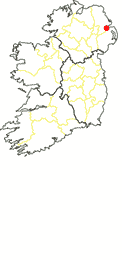

Hugh Montgomery established The Northern Bank on 1st June 1809 with partners John Hamilton, James Orr and John Sloan.
John Hamilton had been a partner in the earlier Belfast-based private bank of John Ewing and Co. which had closed in an orderly manner in 1797 after a prosperous decade in business.
The Northern Bank went through two partnership changes with James Orr taking over as lead partner upon the retirement of Hugh Montgomery in 1820. The bank was known both as 'The Northern Bank' and as 'Montgomery’s'.
The Northern Bank converted itself into The Northern Banking Company in 1824, the first joint stock bank in Ireland, and began to issue its first new banknotes in 1825.
Montgommery's Bank became an important note-issuing bank in the north east of Ireland in the early 1800s. Together with the two other banks established in Belfast around the same time, Tennant's Bank (est.1809) and Gordon's Bank (est.1808), the notes of Montgomery's replaced gold coin in circulation. All notes were denominated in Sterling.
Banknotes of Montgomery's Bank are very rare.
Two Series of notes known for Montgomery's
There appear to be two Series by design, although this may prove to be three when more examples of One Pound notes become available for study.
Series 1. Denominations recorded: £1, 30 Shillings, £2.
Series 2. Design modified. Denominations recorded: 30 Shillings.
Three Types by partnership.
Type A. Hugh Montgomery, John Hamilton, James Orr, John Sloan (1809-1820)
Type B. James Orr, John Sloan, John McCance, Hugh Montgomery Jnr. (1820-1824)
Type C. James Orr, John McCance, Hugh Montgomery Jnr., John McNeile (1824).
Denominations recorded: £1, 30 Shillings, £2 notes recorded.
Series 1, Type A

Northern Bank One Pound 1819, Hugh Montgomery, John Hamilton, James Orr, John Sloan

Northern Bank 30 Shilling note, with Hugh Montgomery as lead partner

Northern Bank £2 note, issued in 1813 with Hugh Montgomery as lead partner
Series 1, Type B

Northern Bank £1 issued in 1823 with James Orr as lead partner
Series 2, Type C

Northern Bank 30 Shilling note issued in 1824 with James Orr as lead partner
References
2. Hill, E. D., (1924). The Northern Banking Company Limited an Historical Sketch Commemorating a Century of Banking in Ireland By the First Joint - Stock Bank Established in That Country 1824-1924. Northern Banking Company, Belfast.